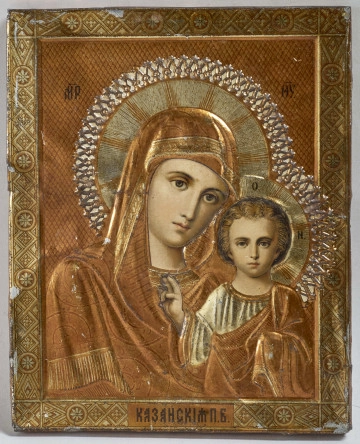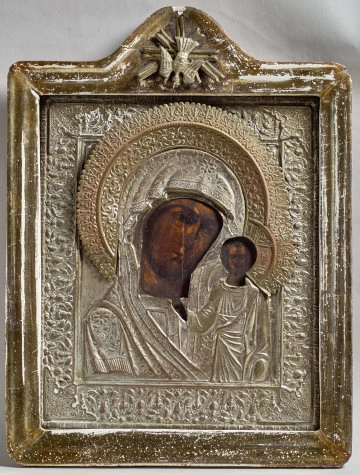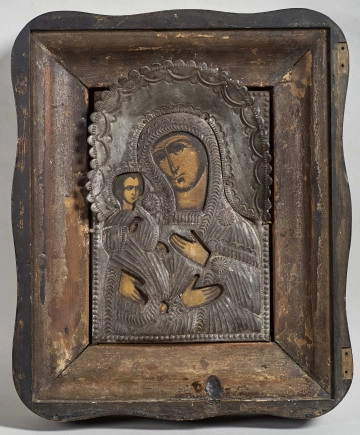
The Mother of God of Kazan, Hodegetria
koniec XIX w.
Castle Museum in Łańcut
Part of the collection: Ikony
The juxtaposition of several depictions on a single painting support is part of the Eastern tradition. In the territory of Ruthenia, such icons presumably appeared at the end of the 14th century, the oldest known examples dating back to the 15th century from Novgorod. Typically juxtaposed were particularly venerated, wonderworking depictions of the Mother of God; the illustrations included feasts, intercessors for specific needs or Gospel scenes. The most important depiction on the featured icon is the Resurrection of Christ, placed in the central area of the upper strip. This theme, as an event with no historical witnesses, has been depicted indirectly in Eastern Christianity for centuries, usually by the image of the descent of Christ into hell attested in prophecies and the Apostolic Letters. On the left side of the icon is placed one of the most important images in Russian Orthodoxy of the Mother of God with the Child - the Mother of God of Kazan; on the right, the commonly adored patron saint for every need in life – St Nicholas the Wonderworker. In the middle strip there is an image of Archangel Michael surrounded by four saints, and in the lower strip – three figures among which St George wearing armour and riding a horse – the slayer of the legendary dragon – stands out. The painting bears traces of scorching and flaking of the paint layer, indicating the intensity of use of the household icon.
Teresa Bagińska-Żurawska https://orcid.org/0000-0002-9243-3967
Author / creator
Object type
ikony
Technique
tempera, pozłotnictwo
Material
wood, chalk, distemper, silver
Creation time / dating
Creation / finding place
Owner
Muzeum - Zamek w Łańcucie
Identification number
Location / status

koniec XIX w.
Castle Museum in Łańcut

koniec XIX w.
Castle Museum in Łańcut

20th century
Castle Museum in Łańcut
DISCOVER this TOPIC
Museum of King Jan III's Palace at Wilanów
DISCOVER this PATH
Educational path